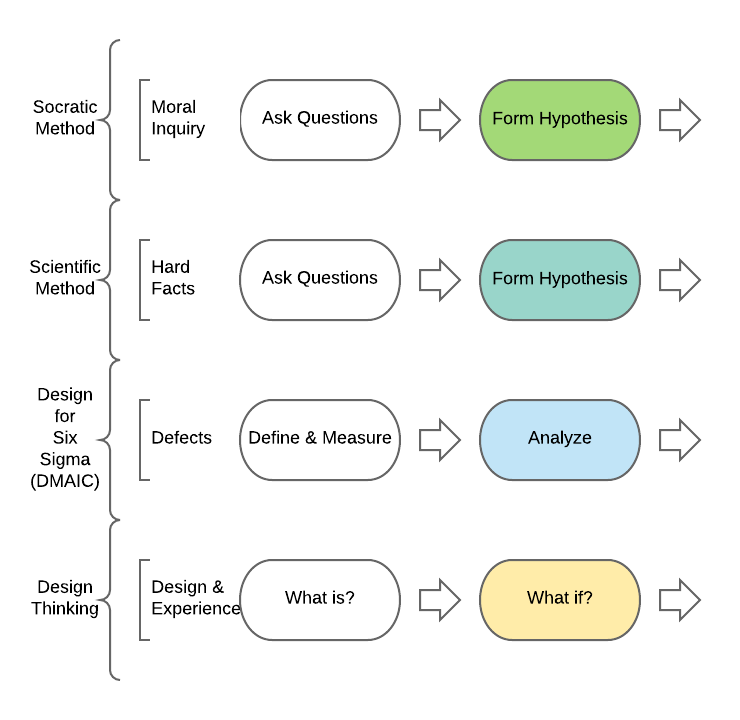This post is part of a series on innovation and problem-solving methods that starts here.
In Step 1, we talked about asking questions, understanding the lay of the land with a new set of eyes, re-evaluating current circumstances from new perspectives by starting fresh, asking questions, and allowing all the dirty facts to come to light. You may find that this step takes longer than expected. When teams are large, or when they have never had a proper opportunity to go deep into the questions at hand without the fear of “cya” (or in more pc terms “cover your rear end”), you might be surprised at just how much people who generally share the same space may see things differently — If you have ever been in a committed relationship, you will know exactly what I mean! 🙂
So make sure you don’t skip ahead too fast. Dwell in step one. If you are lucky, there are great options that will come to light.
Once exploratory questions have been asked and answered, points have been laid out, data has been measured, and perspectives have been captured, it’s time for step 2. Below is a review of the methods previously described, with the second step added to each:

See a trend?
None of these methods call for prematurely jumping into analyzing, or forming hypotheses, yet some of the methods, as we will see later, are pro rapid prototyping. So please don’t lose patience just yet, the time that looks to be “wasted” here, is actually saved on the back end.
Back to step 2: once you are crystal clear and sure that your information is as good as it is going to get – As opposed to perfect – and I know you know the difference. It is time to “ideate”. Let your imagination go wild. If it is data…pivot table it to death, if it’s ideas, build on them, deconstruct them, be silly, be hopeful, be bold, be playful, channel your alter egos if you have to, and see what they say, and again be inclusive! I will throw in a plug for my quiet introverts out there…If you have some on your team, please let them speak! If they won’t speak, let them write…your team is there for you…don’t underestimate the power of those quiet observers.
As mentioned before, there are many techniques to ensure mastery of these steps, and these can be pursued of course, but I encourage you to start where you are, on your next problem perhaps. Give it time, and use common sense as an initial guide. After step 1, and step 2, do you sense progress?
For a little more on this particular step, here are a few techniques worth noting: How might we?, A hypothesis review from the classroom, Six sigma Analyze phase
Thanks for reading this far! Have some thoughts on this? Please do share! if you’d like to hear more, subscribe on the right & the next post will come to you first.
____________________
Therese Karitanyi is MD at Kemura, she is into creating systems and environments that allow big and small genius ideas to come to life
info@kemuraltd.com

